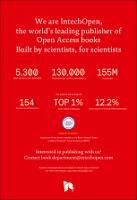Chapter New Insights and Horizons from the Linear Response Function in Conceptual DFT
Author(s)
Stuyver, Thijs
De Proft, Frank
Fias, Stijn
Ayers, Paul
Geerlings, P.
Language
EnglishAbstract
An overview is given of our recent work on the linear response function (LRF) χrr′ and its congener, the softness kernel srr′, the second functional derivatives of the energy E and the grand potential Ω with respect to the external potential at constant N and μ, respectively. In a first section on new insights into the LRF in the context of conceptual DFT, the mathematical and physical properties of these kernels are scrutinized through the concavity of the E=ENv and Ω=Ωμv functionals in vr resulting, for example, in the negative semidefiniteness of χ. As an example of the analogy between the CDFT functionals and thermodynamic state functions, the analogy between the stability conditions of the macroscopic Gibbs free energy function and the concavity conditions for Ω is established, yielding a relationship between the global and local softness and the softness kernel. The role of LRF and especially the softness kernel in Kohn’s nearsightedness of electronic matter (NEM) principle is highlighted. The first numerical results on the softness kernel for molecules are reported and scrutinized for their nearsightedness, reconciling the physicists’ NEM view and the chemists’ transferability paradigm. The extension of LRF in the context of spin polarized conceptual DFT is presented. Finally, two sections are devoted to ‘new horizons’ for the LRF. The role of LRF in (evaluating) alchemical derivatives is stressed, the latter playing a promising role in exploring the chemical compound space. Examples for the transmutation of N2 and the CC→BN substitution pattern in 2D and 3D carbocyclic systems illustrate the computational efficiency of the use of alchemical derivatives in exploring nearest neighbours in the chemical compound space. As a second perspective, the role of LRF in evaluating and interpreting molecular conductivity is described. Returning to its forerunner, Coulson’s atom-atom polarizability, it is shown how in conjugated π systems (and within certain approximations) a remarkable integral-integrand relationship between the atom-atom polarizability and the transmission probability between the atoms/contacts exists, leading to similar trends in both properties. A simple selection rule for transmission probability in alternating hydrocarbons is derived based on the sign of the atom-atom polarizability.
Keywords
conceptual DFT, linear response function, nearsightedness of electronic matter, alchemical derivatives, molecular conductivityDOI
10.5772/intechopen.80280Publisher
InTechOpenPublisher website
https://www.intechopen.com/Publication date and place
2019Classification
Chemistry


 Download
Download